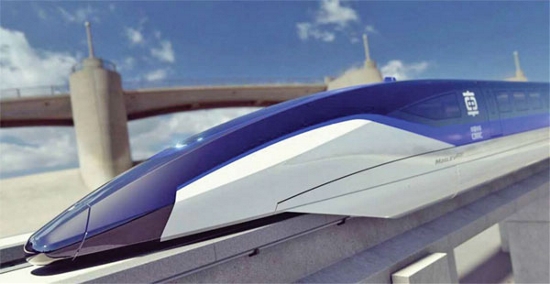
Ministry of Science and Technology has decided to transfer some key research projects over to enterprises, such as the CRRC, a conference on major special rail transportation projects announced in October 21.
CRRC was the first enterprise to take on the trial projects, who received seven out of ten projects from the Ministry of Science and Technology.
The project will be led by CRRC Qingdao Sifang Co Ltd. in Shandong province, one of the three subsidiary bullet-train makers. A high-speed maglev test line n Qingdao with a length of no less than 5 kilometers under the project is expected to be completed by 2021. Shandong province in East China plans to construct a high-speed maglev system that runs from Jinan, the province's capital city to Qingdao, which is the first operation line based on this project.
CRRC will also develop maglev trains with speeds of up to 200 km/h at CRRC Zhuzhou Electric Locomotive Co in Hunan province.
"The goal for these two projects is to establish domestic technology and standard systems for new-generation medium- and high-speed maglev transportation that can be applied globally," says Sun Bangcheng, deputy director of CRRC's office for major project development.
Investment in these projects will reach 3.22 billion yuan ($476 million; 437 million euros). The government will allocate 433 million yuan, with the remainder to be raised by CRRC.
Compared with other types of urban rail transportation, Sun says maglev trains are quiet and can achieve high speeds because they don't actually ride on rails with wheels but hover centimeters above the track through the use of magnets, avoiding friction, which reduces speed.
The world's first maglev line was launched in Shanghai in 2002, connecting a metro station to Shanghai Pudong International Airport. With speeds of up to 430 km/h, its 30 km route takes less than eight minutes to travel.
Beijing is also currently building a low-speed maglev urban rail route - the S1 line - which will pass through Shijingshan and end in Mentougou in the city's western outskirts. The 11-km line will be operational by the end of next year.
CRRC will also start research and development of cross-border high-speed trains that can run at 400 km/h and alternate between different track gauges, ranging from 60 cm to 1.676 meters.
"Such trains will consume 10 percent less energy than the country's 350 km/h bullet trains currently in use," says Sun Fuquan, a researcher specializing in railway vehicles at the Chinese Academy of Science and Technology for Development in Beijing.
China has seen rapid development of its high-speed railways in recent years, with their total length exceeding 20,000 km, the world's longest high-speed rail network.